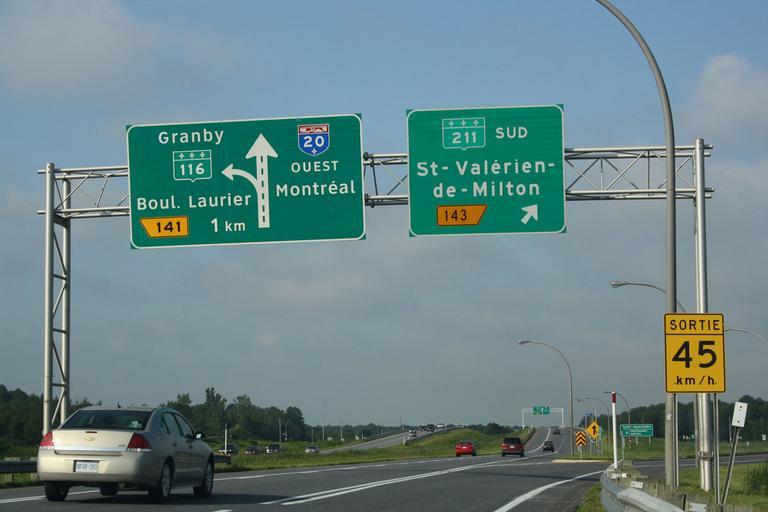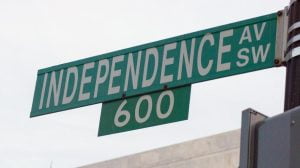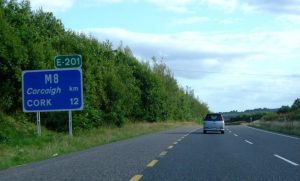
Navigational signs are not just positioned on the side of the road to decorate or make the road look beautiful, they are there for directions.
They are quite different from other road signs in the type of directions they give and their color. Therefore, the question is, the navigational signs on the highway are often which colors?
Navigational signs on highways are often green or blue color with green being the major color.
What is a Navigational Sign?
Navigational signs are signs placed above roads or erected on the side of the road to give adequate directions, information, and instructions to road users.
These signs are usually placed at strategic positions and places on the road for easy access by road users.
Navigational signs can be pictorial, word, or both. It tells you which way to go to get to your destination, what turns to make, the distance from where you are, etc.
Navigational Signs on the Highway are Often Which Colors?
Navigational signs on the highway are either green in color or blue with white used for the written information on the sign.
Either of these two colors is used because they are cool and do not necessarily draw a person’s attention away unlike other bright colors. Green or blue is not too bright or too dull.
The green-colored navigational sign makes it easy for a vehicle’s driver to get accurate directions on where the next turn and exit to their destination is. Plus, they can easily be spotted ahead before getting to the turn.
Importance of Navigational Signs on Highway
The importance of navigational signs on highways are:
1. It Aids the Free flow of Traffic
One of the many benefits of navigational signs is their ability to ensure the flow of traffic without hindrance.
Without a sign on the road to direct you on where to turn, there will be so many stuck drivers on the road which may result in a standstill of vehicles.
2. It Gives Direction
One can’t talk about the importance of navigational signs without the mention of direction, in fact, it should be the first importance.
The main purpose of putting up navigational signs on the road is to direct road users. If at any point in your journey, you get confused as to which way to go, there are navigational signs around all you have to do is follow them.
3. It Gives Mileage Information
A type of navigational sign is the mile maker which tells you how many miles there are before you get to your destination.
Knowing how much longer you have to get to your destination could ease your mind if you are getting anxious and also help prepare you for the journey ahead if you still have a long way to go.
4. It Makes Traveling Easy and Less Stressful
Traveling to a destination you’ve never been to before could be stressful and tiring then adding the fact that you don’t really know which way to follow to get there.
The navigational sign makes your journey less stressful as you can always follow the directions given at strategic locations.
5. It Prevents You From Getting Stranded
Without navigational signs on the highway, lots of people would get stranded on the road because they might have made a wrong turn in the road that leads nowhere.
With the help of navigational signs, you can be sure you are going in the right direction without fear of getting stranded.
6. It Informs the Driver of Work Being Carried Out on the Road
Another importance of the highway navigational sign is that it alerts drivers to construction work being done on the road before they get there.
The bright orange triangle comes in handy at times like this as it alerts road users who are about to enter a work zone or that there are construction works going on ahead. It gives the driver ample time to take another route rather than getting stuck in a difficult situation.
This is one reason why you should be on alert when driving on the expressway/highway when alert you will be able to see this sign in time and take the necessary and appropriate action
Highway Navigational Signs and their Meaning
There are various highway navigational signs meaning different things. Let’s take a look at some of them with meanings.
Street Signs

Street signs are often rectangular and green in color, usually located at the end of or entrance to a street. The sign holds the street’s name which helps anyone looking for that particular street to easily locate them.
Distance Sign

The distance signs are most often located on the side of major highways and interstates. They are large billboard-like sign that indicates the next destination on a journey with the distance. The distance sign is useful in that it helps you match your location with GPS directions.
Mile Makers
These are signs on the side of the highway that show the numerical distance from the driver’s current location.
Mile markers are usually small rectangular green signs with numbers in white. With the mile maker, you are able to give someone your precise location in the event that you are stalled on the road.
Interstate and Highway Shield
Of the various type of navigational signs, the interstate highway shield is usually blue in color with outlined red and the pictures, letters, or numbers in white.
The state highway shield on the other hand is white with a black outline and highway number in black also. Both the state and interstate shield is always the shape of a shield.
This shield shows the direction of the interstate whether North, East, West, or South with an accompanying arrow sign showing which way to go.
Orange Triangles
This sign is a color different from the usual green and blue navigational signs known. The name carries the color already, the orange triangle is bright orange in color and its purpose is to show areas where road work is underway.
Although the color is orange, it has black markings with a human shape on it. This sign may lead to a change in direction from the usual route.
Conclusion
Navigational signs shouldn’t be ignored as they can be the only thing preventing you from getting into a difficult situation. It also serves as an added source of direction if you are using a map or GPS.

